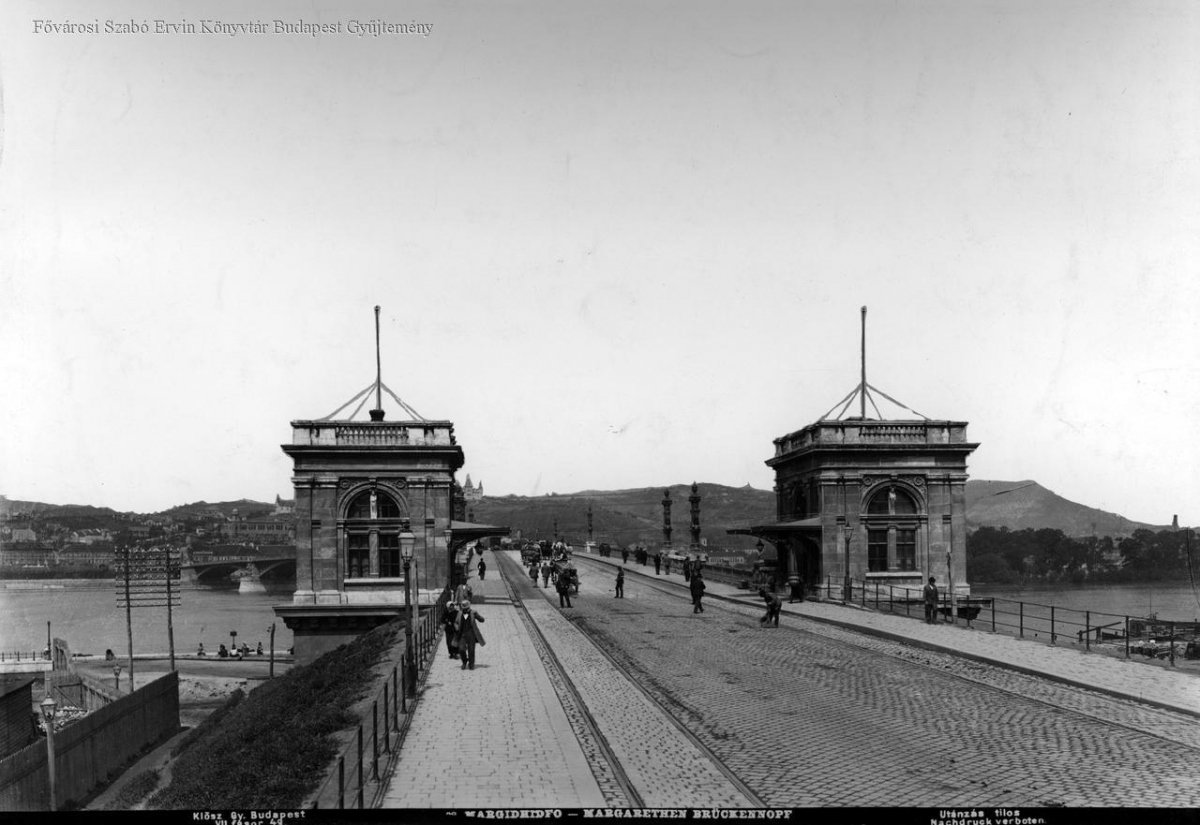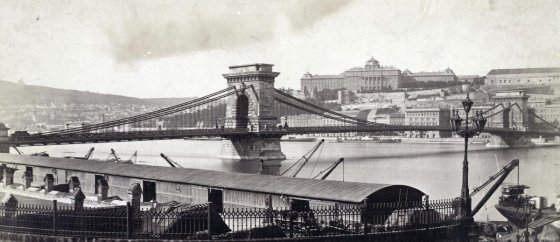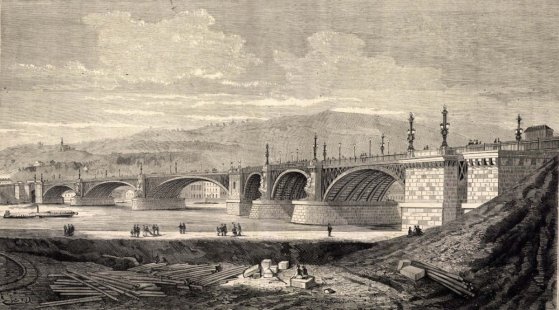 The „intertwined history” of the bridges and the city of Budapest
Which ideas and events have shaped the fate of bridges of Budapest and the cityscape? Alongside many other interesting facts, this question is also answered this newly published book by the Budapest City Archives, which introduces the history of bridges in Budapest.
The „intertwined history” of the bridges and the city of Budapest
Which ideas and events have shaped the fate of bridges of Budapest and the cityscape? Alongside many other interesting facts, this question is also answered this newly published book by the Budapest City Archives, which introduces the history of bridges in Budapest.
horse-drawn railway
 Who should pay for the bridge? - The Pest and Buda horse-drawn railway companies merged 145 years ago
Who should pay for the bridge? - The Pest and Buda horse-drawn railway companies merged 145 years ago
February 4, 2023 at 2:00 PM
The desire to save money forced the merger of the Pest and Buda horse-drawn railway companies because horse-drawn railway traffic was only allowed on Margit Bridge if the companies paid the additional cost of the wider bridge. Since the two companies could not agree on the use of the bridge, 145 years ago the larger, richer company bought the smaller one instead. This made it possible for horse-drawn railway transport to start between Pest and Buda a year later, in 1879.
Before the big changes - Budapest at the time of the compromise
May 2, 2022 at 11:00 AM
The Austro-Hungarian Compromise, established in 1867, ushered in one of Hungary's heyday. Under the Compromise of 155 years ago, a dual system was created - hence our common word dualism, which is used to characterise the period up to 1918. This upswing has brought about great changes: as a result of industrialisation, more and more people have moved to the cities, and the population of Budapest has grown exponentially. But what was the capital like in the second half of the 1860s?
The look of the second bridge of Budapest was decided 150 years ago
March 8, 2022 at 11:00 AM
The result of the design competition for the Margit Bridge was decided on 9 March 1872, 150 years ago. The winner became Ernest Gouin’s elegant arch bridge idea. The bridge south of Margit Island was to be built with a representative purpose, hoping to raise the light of the about-to-be united Budapest, and help make it a Vienna-like capital of the country. Despite large-scale ideas, there has been a petty discussion about cutting construction costs.
The first horse-drawn railway of Pest started 155 years ago
August 1, 2021 at 9:30 AM
On 1 August 1866, the regular services of the city horse-drawn railway started in Pest. The first route led from today's Kálvin Square to Újpest, the journey time was 35 minutes. The new means of transport advocated by Count Sándor Károlyi was successful, and the horse-drawn railway contributed significantly to the development of Újpest. A few years after the handover of the first track, Pest and Buda were almost enmeshed by horse-drawn railway tracks.
More articles
 The „intertwined history” of the bridges and the city of Budapest
Which ideas and events have shaped the fate of bridges of Budapest and the cityscape? Alongside many other interesting facts, this question is also answered this newly published book by the Budapest City Archives, which introduces the history of bridges in Budapest.
The „intertwined history” of the bridges and the city of Budapest
Which ideas and events have shaped the fate of bridges of Budapest and the cityscape? Alongside many other interesting facts, this question is also answered this newly published book by the Budapest City Archives, which introduces the history of bridges in Budapest.
 The Bridge Report, which brought a turning point in the history of Budapest
A travel report that changed the history of Pest and Buda, as well as Hungary. The little book contributed to the change of half a thousand years of legal customs and the implementation of an investment of unprecedented size and technical quality. This book was The Bridge Report [Hídjelentés in Hungarian].
The Bridge Report, which brought a turning point in the history of Budapest
A travel report that changed the history of Pest and Buda, as well as Hungary. The little book contributed to the change of half a thousand years of legal customs and the implementation of an investment of unprecedented size and technical quality. This book was The Bridge Report [Hídjelentés in Hungarian].
 Drama on the university wall - The heroic monument was planned 95 years ago
In the constant hustle and bustle of the Egyetem Square in Pest, the students may not even notice the monument that decorates the short section of wall between the church and the central building of ELTE. However, it commemorates their predecessors, the heroes who fought for their country in World War I, and those who heroically helped them. The first design of the dramatically collapsing soldier was born in 1928, ninety-five years ago.
Drama on the university wall - The heroic monument was planned 95 years ago
In the constant hustle and bustle of the Egyetem Square in Pest, the students may not even notice the monument that decorates the short section of wall between the church and the central building of ELTE. However, it commemorates their predecessors, the heroes who fought for their country in World War I, and those who heroically helped them. The first design of the dramatically collapsing soldier was born in 1928, ninety-five years ago.



